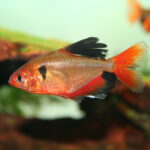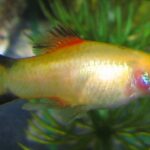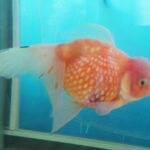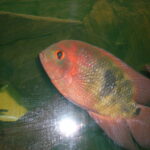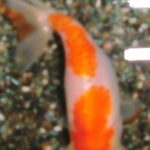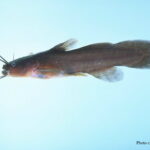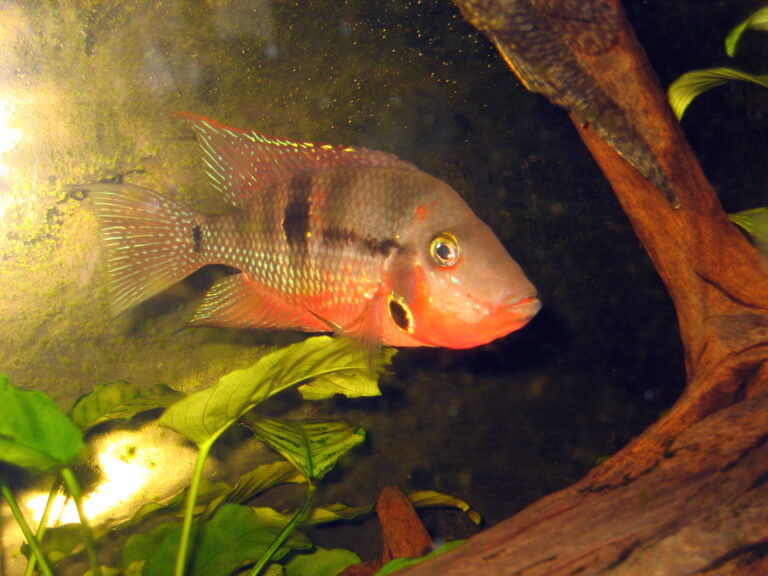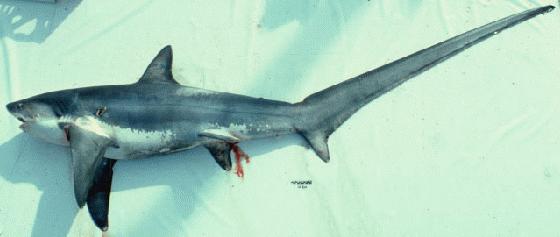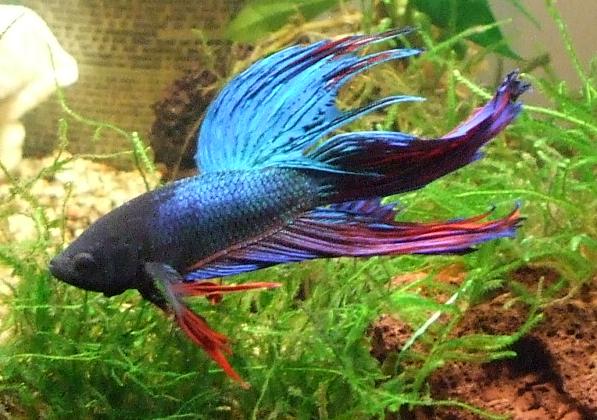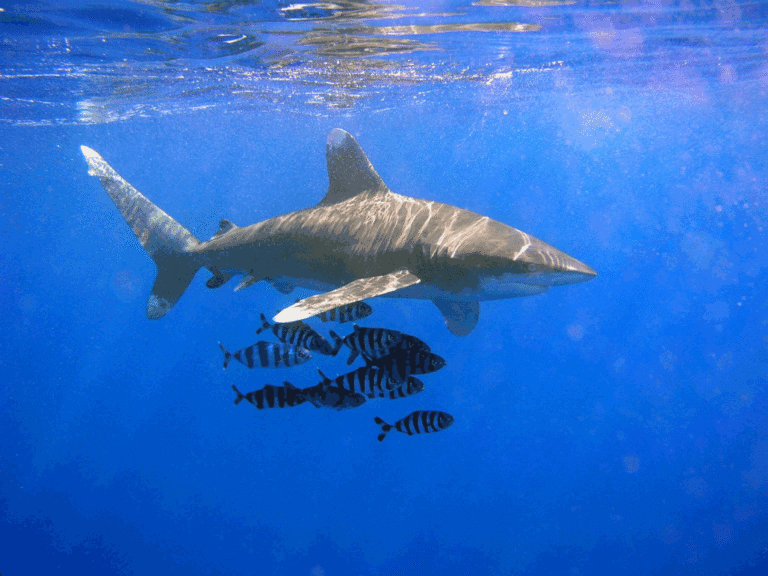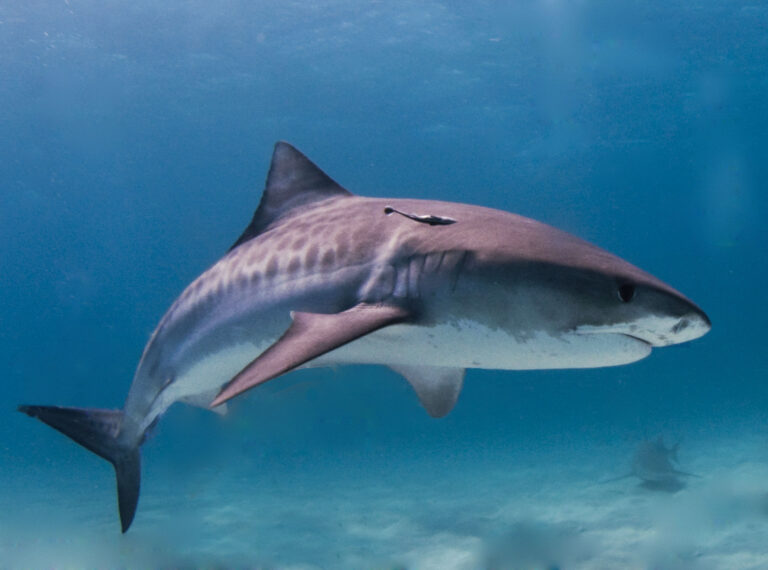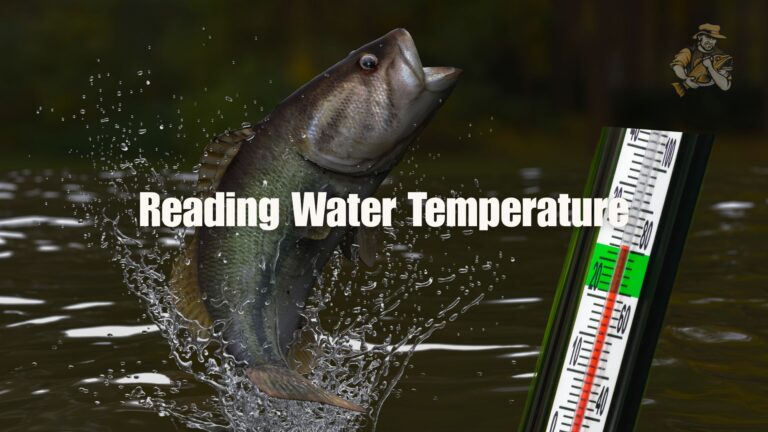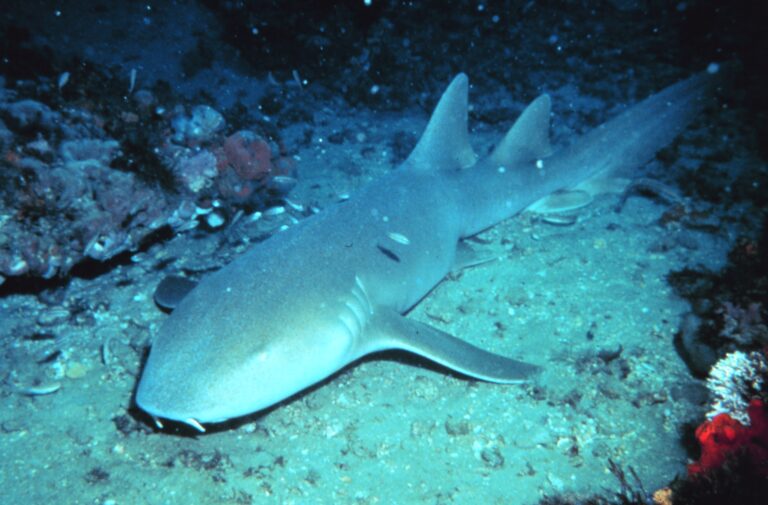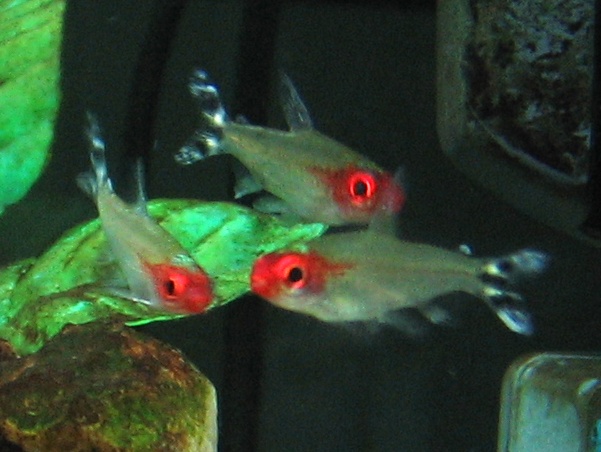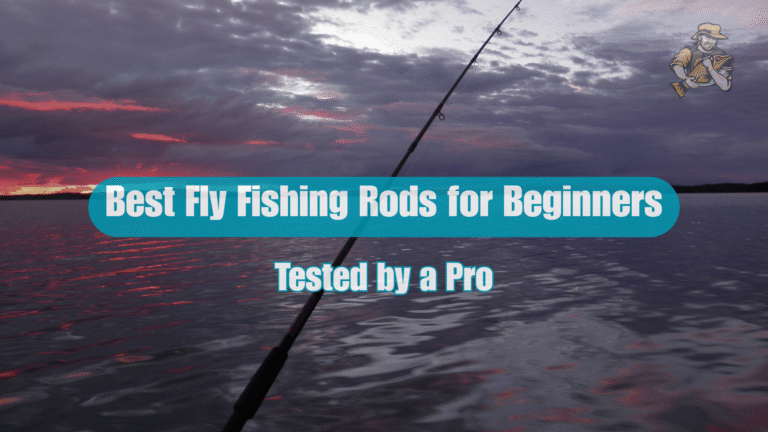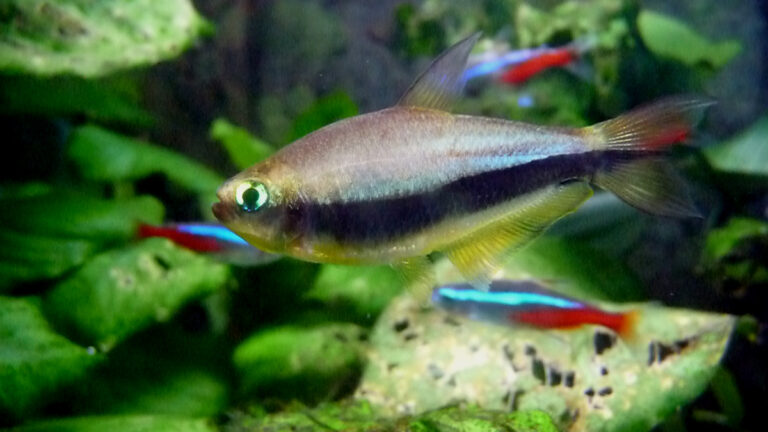Kissing Gourami
By Ryan Maron | Last Modified: June 10, 2025
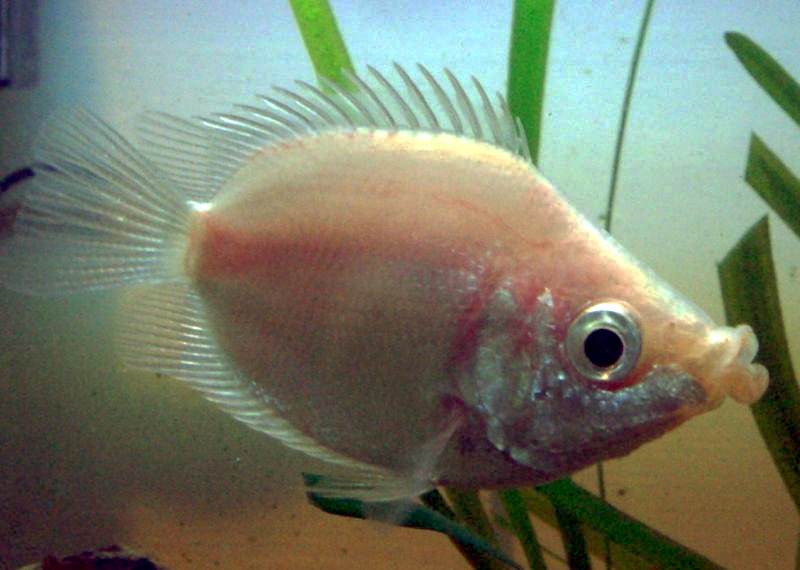
The Kissing Gourami (*Helostoma temminckii*) stands as one of the most distinctive and recognizable freshwater fish species in both aquarium hobby and natural ecosystems. This unique labyrinth fish derives its common name from its characteristic behavior of pressing its thick, protruding lips against surfaces, other fish, or objects in what appears to be kissing behavior. Native to Southeast Asian freshwater systems, the Kissing Gourami plays a crucial ecological role as both an algae consumer and omnivorous forager, helping maintain the delicate balance of aquatic plant communities and nutrient cycling in tropical river systems.
Beyond its ecological significance, the Kissing Gourami has become economically important as a food fish in its native range and as a popular aquarium species worldwide. Its adaptability to various water conditions and peaceful temperament have made it a cornerstone species in the aquarium trade, while its algae-eating capabilities position it as a natural biological control agent in both wild and managed aquatic environments.
| Feature | Details |
|---|---|
| Common Name | Kissing Gourami |
| Scientific Name | Helostoma temminckii |
| Family | Helostomatidae |
| Typical Size | 20-30 cm (8-12 inches), 200-500 grams |
| Habitat | Slow-moving rivers, floodplains, rice paddies |
| Diet | Omnivorous – algae, plankton, detritus |
| Distribution | Southeast Asia, Mekong Basin |
| Conservation Status | Least Concern |
Taxonomy & Classification
The Kissing Gourami belongs to the monotypic family Helostomatidae, making it the sole representative of its taxonomic group. This unique positioning reflects its evolutionary divergence from other labyrinth fishes approximately 50 million years ago. The species was first scientifically described by Pieter Bleeker in 1852, with the genus name *Helostoma* derived from Greek words meaning “nail mouth,” referencing the distinctive lip structure.
Within the broader classification system, the Kissing Gourami falls under the order Anabantiformes, which encompasses all labyrinth fish species. This order includes other popular aquarium families such as Osphronemidae (true gouramis) and Belontiidae (paradise fish and bettas). The family Helostomatidae represents an ancient lineage that separated early from other anabantoid groups, explaining many of the species’ unique characteristics.
Recent molecular phylogenetic studies have confirmed the Kissing Gourami’s position as a sister group to all other anabantoids, supporting its classification as a primitive member of the order. This evolutionary position explains several anatomical features that distinguish it from other gourami species, including its specialized feeding apparatus and unique reproductive behaviors.
The species shows minimal geographic variation across its range, with some researchers recognizing two color morphs rather than distinct subspecies. The taxonomic stability of *Helostoma temminckii* reflects both its morphological consistency and the relatively recent comprehensive genetic analysis of Southeast Asian freshwater fish populations.
Physical Description
The Kissing Gourami exhibits a distinctive oval-shaped, laterally compressed body profile that immediately distinguishes it from other freshwater species. Adult specimens typically reach lengths of 20-30 centimeters in wild populations, though aquarium individuals often remain smaller at 15-20 centimeters due to spatial constraints. The body depth measures approximately 40-45% of the total length, creating the characteristic disc-like appearance that aids in maneuvering through dense aquatic vegetation.
The most recognizable feature remains the enlarged, protruding lips equipped with numerous small teeth arranged in comb-like rows. These specialized lips can extend significantly from the mouth, allowing the fish to scrape algae and biofilm from surfaces with remarkable efficiency. The mouth structure represents a highly evolved adaptation for surface grazing, with the lips capable of creating suction pressure up to three times that of typical freshwater fish species.
Coloration varies between two primary morphs: the green form displaying olive-green to brownish-green hues with darker vertical banding, and the pink form exhibiting pale pink to silver coloration. The green morph represents the natural wild type, while the pink variety resulted from selective breeding programs that began in the 1960s. Both forms possess translucent fins with subtle yellow or orange tinges, particularly noticeable in the anal and dorsal fins.
The dorsal fin contains 16-18 soft rays without spines, extending along most of the back length. The anal fin mirrors this configuration with 17-19 rays, while the caudal fin displays a slightly rounded profile. Unlike Betta fish varieties, the Kissing Gourami lacks the elaborate finnage extensions common in other anabantoids. The labyrinth organ, housed within the gill chamber, appears less developed than in other family members but remains functional for atmospheric breathing.
Habitat & Distribution
The natural range of the Kissing Gourami encompasses the Mekong River basin and associated tributaries across Thailand, Cambodia, Vietnam, and Laos. Primary habitats include slow-moving rivers, oxbow lakes, floodplains, and seasonally inundated rice paddies where water temperatures remain consistently between 24-28°C. These environments typically feature soft, slightly acidic water with pH levels ranging from 6.0-7.5 and minimal water movement.
During the wet season, Kissing Gouramis migrate into flooded agricultural areas and temporary wetlands, following the expansion of suitable habitat. This seasonal movement pattern allows access to abundant food resources in newly inundated areas while providing optimal spawning conditions among submerged vegetation. The species demonstrates remarkable tolerance for varying water conditions, surviving in environments with dissolved oxygen levels as low as 2-3 mg/L due to their labyrinth organ capabilities.
Substrate preferences lean toward soft mud or sandy bottoms rich in organic detritus, supporting the diverse microbial communities that form a significant portion of their diet. Dense aquatic vegetation, particularly species like *Vallisneria* and *Cryptocoryne*, provides both shelter and foraging opportunities. Water depth in preferred habitats typically ranges from 0.5-3 meters, though individuals adapt to both shallower and deeper areas when necessary.
Human activities have significantly expanded the species’ effective range through aquaculture operations and rice farming practices. Artificial ponds, irrigation channels, and managed wetlands now support substantial populations throughout Southeast Asia. Climate change and altered precipitation patterns pose emerging challenges to traditional habitat availability, particularly affecting seasonal flooding cycles crucial for reproductive success.
Introduction to non-native regions has occurred through the aquarium trade, with established populations reported in parts of South America and the Philippines. These introductions raise ecological concerns about impacts on native fish communities and aquatic plant populations in recipient ecosystems.
Diet & Feeding Behavior
The Kissing Gourami functions as an opportunistic omnivore with a pronounced preference for algae and plant matter, filling a crucial ecological niche as a primary consumer in freshwater food webs. Dietary analysis reveals that algae and periphyton comprise 60-70% of stomach contents in wild specimens, with the remainder consisting of small invertebrates, detritus, and organic particles. The specialized lip structure enables efficient scraping of biofilm and algae from submerged surfaces, rocks, and plant leaves.
Feeding behavior follows distinct patterns throughout the day, with peak activity occurring during early morning and late afternoon hours. The characteristic “kissing” motion serves multiple purposes: surface cleaning, territory establishment, and social interaction. When feeding, individuals systematically work across available surfaces, using their protruding lips to create suction that removes algae and associated microorganisms with remarkable efficiency.
Zooplankton consumption increases during reproductive periods, with adults actively filtering small crustaceans, rotifers, and insect larvae from the water column. This dietary shift provides essential proteins and lipids necessary for egg development and spawning success. Basic fishing techniques targeting these fish often utilize plant-based baits that mimic their natural feeding preferences.
Seasonal variations in food availability drive corresponding changes in feeding intensity and selectivity. During dry seasons when algae growth concentrates in smaller water bodies, competition for food resources intensifies, leading to more aggressive feeding behaviors and increased territoriality around prime foraging sites. Conversely, wet season abundance allows for more relaxed feeding patterns and greater dietary diversity.
The species demonstrates remarkable adaptability in captive environments, readily accepting commercial fish foods, blanched vegetables, and various plant matter. This dietary flexibility contributes significantly to their success as both aquaculture species and aquarium fish, though optimal nutrition requires maintaining the natural balance between plant and animal proteins found in wild populations.
Behavior & Adaptations
Social structure in Kissing Gouramis centers around loose aggregations rather than tight schooling behavior, with individuals maintaining territories during breeding seasons while forming peaceful feeding groups during non-reproductive periods. The famous “kissing” behavior serves multiple functions beyond feeding, including dominance establishment, territory defense, and social bonding between potential mates. These lip-locking contests can last several minutes, with participants pushing against each other to establish hierarchy without causing physical harm.
Territorial behavior intensifies during spawning seasons, with males establishing and defending areas of 2-3 square meters around suitable nesting sites. Defense mechanisms include aggressive kissing displays, lateral body presentations, and rapid swimming patterns designed to intimidate intruders. Despite this territorial nature, serious physical confrontations remain rare, with most disputes resolved through ritualized displays rather than actual combat.
The labyrinth organ provides crucial physiological adaptation for survival in oxygen-poor environments common throughout their natural range. This specialized respiratory structure allows atmospheric breathing when dissolved oxygen levels drop below 4 mg/L, enabling survival in stagnant water conditions that would prove fatal to many other freshwater species. Regular surface breathing behavior occurs every 10-15 minutes under normal conditions, increasing to every 2-3 minutes during periods of environmental stress.
Communication involves a complex array of visual signals, body postures, and low-frequency sounds produced through gill cover movements. Color changes, particularly intensification of vertical banding patterns, indicate stress levels and reproductive readiness. Submissive individuals often display pale coloration and remain motionless near the bottom, while dominant fish maintain bright colors and active swimming patterns throughout their territories.
Environmental adaptations include remarkable tolerance for temperature fluctuations, surviving short-term exposure to temperatures as low as 18°C or as high as 35°C. This thermal tolerance reflects the variable conditions experienced in shallow tropical waters subject to significant daily temperature swings and seasonal variations.
Reproduction & Life Cycle
The reproductive cycle of Kissing Gouramis follows seasonal patterns closely tied to monsoon rains and flooding cycles throughout Southeast Asia. Spawning typically occurs during the early wet season when rising water levels provide access to flooded vegetation and optimal conditions for egg development. Sexual maturity occurs at 12-18 months of age, corresponding to body lengths of 12-15 centimeters and weights of 80-120 grams.
Pre-spawning behavior involves elaborate courtship rituals lasting several days, during which potential mates engage in extended kissing sessions, synchronized swimming patterns, and territory establishment. Males construct simple nests by clearing circular areas 20-30 centimeters in diameter on soft substrate surfaces, often beneath overhanging vegetation or near submerged logs. Unlike many anabantoids, Kissing Gouramis do not build bubble nests, instead opting for substrate spawning behavior.
Spawning events occur during early morning hours, with females releasing 500-2000 eggs in multiple batches over 2-3 hours. Eggs measure approximately 1.2 millimeters in diameter and possess slightly adhesive properties that allow attachment to vegetation and substrate surfaces. Fertilization rates typically exceed 85% under optimal conditions, with males maintaining territories and providing limited parental care for 24-48 hours post-spawning.
Incubation periods vary with water temperature, ranging from 18-24 hours at 28°C to 36-48 hours at 24°C. Newly hatched larvae measure 2.5-3.0 millimeters and possess functional yolk sacs that sustain them for 3-4 days before active feeding begins. Early larval diet consists primarily of infusoria, rotifers, and other microscopic organisms abundant in flooded vegetation areas.
Juvenile development progresses rapidly under favorable conditions, with young fish reaching 2-3 centimeters within 6-8 weeks and beginning to display characteristic feeding behaviors. Growth rates depend heavily on food availability and water temperature, with well-fed juveniles in warm water achieving 50-60% of adult size within their first year. Sexual dimorphism remains minimal throughout development, with behavioral differences becoming apparent only during reproductive maturity.
Predators & Threats
Natural predators of Kissing Gouramis vary significantly across different life stages and habitat types. Adult fish face predation pressure from larger piscivorous species including snakeheads (*Channa* spp.), giant gourami (*Osphronemus goramy*), and various catfish species inhabiting the same river systems. Aquatic birds, particularly herons and kingfishers, pose additional threats in shallow water environments where Kissing Gouramis feed near the surface.
Juvenile and larval stages experience much higher predation rates, with survival to adulthood estimated at only 5-10% in natural populations. Small fish, aquatic insects, amphibians, and even adult Kissing Gouramis target eggs and fry during vulnerable early life stages. The lack of parental protection beyond the first 48 hours leaves developing fish particularly susceptible to predation during their first several weeks of life.
Habitat degradation represents the most significant anthropogenic threat to wild populations. Agricultural expansion, urbanization, and industrial development have altered or eliminated substantial portions of traditional breeding and feeding habitats throughout the Mekong basin. Rice field conversion to other agricultural uses has reduced the seasonal flooding patterns crucial for successful reproduction, while water diversions for irrigation have modified natural flow regimes.
Pollution from agricultural runoff, industrial discharge, and urban development creates additional stressors that compromise immune function and reproductive success. Pesticide contamination from rice farming operations poses particular concerns, as these chemicals accumulate in the algae and plant matter that form the species’ primary food sources. Heavy metal contamination from mining activities and industrial processes has been detected in fish tissues from several areas within the natural range.
Overfishing for both subsistence and commercial purposes has reduced population densities in some regions, particularly where the species serves as an important protein source for local communities. River fishing techniques specifically targeting gouramis have become increasingly efficient, potentially impacting reproductive populations if not properly managed.
Climate change poses emerging long-term threats through altered precipitation patterns, increased temperature extremes, and modified seasonal flooding cycles. These environmental changes could disrupt the precise timing of reproductive cycles and reduce the availability of optimal spawning habitats.
Conservation Status
The International Union for Conservation of Nature (IUCN) currently classifies the Kissing Gourami as “Least Concern” based on its wide distribution, stable population trends, and adaptability to various environmental conditions. This classification reflects the species’ resilience and ability to thrive in both natural and modified habitats throughout its range. However, regional assessments reveal more nuanced conservation concerns that warrant ongoing monitoring and management attention.
Population assessments conducted across the Mekong basin indicate generally stable numbers, though localized declines have been documented in areas experiencing intensive development pressure. The species’ ability to utilize rice paddies and other agricultural water bodies has helped offset habitat losses in some regions, demonstrating remarkable ecological flexibility. Aquaculture operations throughout Southeast Asia maintain substantial breeding populations that could potentially support wild stock enhancement if needed.
Several factors contribute to the species’ current conservation security. High reproductive potential, with females capable of producing multiple spawning events annually, enables rapid population recovery following environmental disturbances. The omnivorous diet and tolerance for varying water conditions provide resilience against moderate habitat modifications. Additionally, the species’ economic value in both food and ornamental fish markets creates incentives for sustainable management practices.
Regional conservation efforts focus primarily on habitat protection and restoration, particularly preserving seasonal wetlands and floodplain connectivity essential for reproductive success. The Mekong River Commission has identified Kissing Gourami habitats as priority areas for conservation within broader ecosystem management frameworks. Several protected areas throughout the range now include specific provisions for maintaining water level fluctuations necessary for successful breeding cycles.
Monitoring programs established by various governmental and non-governmental organizations track population trends, habitat quality, and emerging threats across the species’ range. These initiatives provide crucial data for adaptive management strategies and early detection of population declines that might necessitate more intensive conservation interventions.
Future conservation priorities include addressing climate change impacts, managing pollution sources, and developing sustainable aquaculture practices that reduce pressure on wild populations while maintaining genetic diversity. International cooperation among range countries remains essential for effective conservation across the species’ transboundary distribution.
Human Interaction
The relationship between humans and Kissing Gouramis spans multiple dimensions, from traditional subsistence fishing to modern aquaculture and international ornamental fish trade. In rural communities throughout Southeast Asia, these fish have provided essential protein sources for generations, supporting food security in regions where alternative protein sources may be limited or expensive. Traditional fishing methods include simple nets, basket traps, and bamboo weirs designed to capture fish during seasonal migrations.
Aquaculture development has transformed the species’ economic significance over the past several decades. Commercial farming operations now produce millions of Kissing Gouramis annually for both domestic consumption and export markets. Thailand leads global production, with integrated rice-fish farming systems that utilize flooded rice paddies as nursery areas for juvenile fish. These systems provide additional income for rice farmers while maintaining ecological functions similar to natural wetland habitats.
The international aquarium trade represents another major avenue of human interaction, with Kissing Gouramis ranking among the most popular freshwater ornamental fish species worldwide. Annual exports from Southeast Asian countries exceed several million specimens, contributing significantly to local economies and providing livelihoods for thousands of fish farmers, collectors, and distributors. The species’ hardiness and peaceful temperament make it particularly suitable for beginning aquarists and community tank environments.
Research applications have expanded in recent years, with Kissing Gouramis serving as model organisms for studies of labyrinth fish evolution, respiratory physiology, and aquatic ecosystem dynamics. Universities and research institutions throughout Asia utilize these fish for educational purposes and scientific investigations into tropical freshwater fish biology.
Cultural significance varies across different regions, with some communities incorporating Kissing Gouramis into traditional ceremonies and festivals celebrating aquatic resources. The distinctive “kissing” behavior has made these fish popular symbols of affection and harmony in certain cultural contexts, contributing to their appeal beyond purely utilitarian purposes.
Fishing tips for beginners often include guidance on targeting gouramis in natural settings, as these fish provide excellent opportunities for learning basic freshwater angling techniques while offering good eating quality for successful anglers.
Interesting Facts
The Kissing Gourami’s ability to produce audible sounds through specialized muscle contractions around the swim bladder allows for communication across distances up to 10 meters underwater. These sounds, ranging from low-frequency grunts to higher-pitched clicking noises, serve various purposes including territory establishment, mate attraction, and coordination of group movements during feeding activities.
Despite their common name, the characteristic “kissing” behavior actually represents a form of competition rather than affection. When two individuals lock lips, they are essentially engaging in a test of strength and endurance to establish dominance hierarchies. These contests can last anywhere from 30 seconds to several minutes, with the loser typically swimming away while displaying submissive coloration patterns.
The species exhibits remarkable longevity compared to many other tropical freshwater fish, with documented lifespans exceeding 15 years in both captive and wild environments. This longevity, combined with late sexual maturity, suggests evolutionary adaptations for stable, predictable environments where long-term survival strategies prove more successful than rapid reproduction cycles.
Kissing Gouramis possess the unique ability to survive out of water for extended periods, utilizing their labyrinth organ to extract oxygen from atmospheric air. Under optimal conditions with high humidity, individuals can survive on land for up to 6-8 hours, enabling them to move between isolated water bodies during drought conditions or navigate around barriers that block aquatic passage.
The pink color variety popular in the aquarium trade results from a genetic mutation that affects melanin production, similar to albinism but without the associated vision problems. This mutation occurs naturally at very low frequencies in wild populations but has been selectively bred to create the consistent pink coloration seen in commercial aquaculture operations.
Research has revealed that Kissing Gouramis can recognize and remember individual tank mates for periods exceeding six months, demonstrating cognitive abilities previously thought to be limited to more complex vertebrates. This recognition system influences social hierarchies and territory establishment, with familiar individuals showing reduced aggression compared to newly introduced fish.
The species shows remarkable adaptability to varying salinity levels, tolerating brackish water conditions up to 8-10 parts per thousand salt concentration. This tolerance allows temporary survival in coastal areas affected by saltwater intrusion and enables use of slightly saline groundwater in aquaculture operations where freshwater supplies are limited.
Conclusion
The Kissing Gourami represents a remarkable example of evolutionary specialization and ecological adaptability within Southeast Asian freshwater ecosystems. Its unique morphological adaptations, complex behavioral repertoire, and crucial role as an algae consumer highlight the intricate relationships that maintain aquatic ecosystem stability. As both a culturally significant food source and economically important aquaculture species, the Kissing Gourami demonstrates how proper management of native fish populations can simultaneously support human communities and maintain ecological integrity across tropical freshwater habitats.
Share The Article:
More Fish Species:
-
Firemouth Cichlid
The Firemouth Cichlid (*Thorichthys meeki*) stands as one of Central America’s most recognizable freshwater fish species, distinguished by its…
-
Thresher Shark
The Thresher Shark represents one of the ocean’s most distinctive and captivating apex predators, renowned for its extraordinarily elongated…
-
Crown Tail Betta
The Crown Tail Betta stands as one of aquaculture’s most distinctive ornamental fish, renowned for its dramatically elongated, spiky…
-
Oceanic Whitetip Shark
The Oceanic Whitetip Shark (*Carcharhinus longimanus*) stands as one of the ocean’s most formidable and recognizable apex predators, distinguished…
-
Tiger Shark
The Tiger Shark (Galeocerdo cuvier) represents one of the ocean’s most formidable apex predators, earning its distinctive name from…
-
Green Terror Cichlid
The Green Terror Cichlid stands as one of South America’s most formidable and visually striking freshwater fish species, commanding…
Discover
-
Reading Water Temperature: Seasonal Cues for Better Fishing
I’ve spent more mornings than I can count staring at a thermometer clipped to my fishing line, watching those…
-
King Mackerel Fishing: Top Strategies for Landing Smokers
Some days on the water just stick with you. Few things compare to that first time a king mackerel…
-
Pacific Northwest Salmon Fishing: Guide to Puget Sound and Columbia River
There’s something almost magical about the way Pacific Northwest salmon fight on the end of your line. I still…
-
Bigeye Thresher Shark
The Bigeye Thresher Shark represents one of the ocean’s most extraordinary predators, distinguished by its dramatically elongated tail fin…
-
Nurse Shark
The Nurse Shark (Ginglymostoma cirratum) stands as one of the most recognizable and ecologically significant bottom-dwelling sharks in tropical…
-
Best Fishing Lures for Walleye: Pro Secrets You Won’t Believe
Let me tell you something about walleye fishing that most anglers get completely wrong. After 30+ years of chasing…
Discover
-
Rummy Nose Tetra
The Rummy Nose Tetra stands as one of the most distinctive and recognizable small freshwater fish species in South…
-
7 Best Fly Fishing Rods for Beginners in 2025 (Tested by a Pro)
Ask any fly angler what their most important piece of gear is, and most will point to their rod….
-
Emperor Tetra
The Emperor Tetra (*Nematobrycon palmeri*) stands as one of the most distinctive and sought-after freshwater fish species in the…
-
River Fishing Techniques: Master the Moving Water
Fishing rivers presents a unique set of challenges and rewards that I’ve come to appreciate over my three decades…
-
Largemouth Bass
The Largemouth Bass, scientifically known as *Micropterus salmoides*, stands as one of North America’s most iconic freshwater gamefish and…
-
Pleco
The **Pleco**, scientifically known as *Pterygoplichthys multiradiatus* (common pleco), represents one of the most recognizable and ecologically significant groups…


